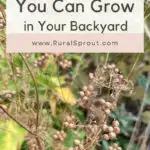
As it often happens, this article was inspired by a leisurely puttering session in my garden. I was collecting seeds, as you do in late summer, and wondering how many people knew that coriander seeds come from the cilantro plant.
As soon as this train of thought left the station, I had a quick look around to take stock of the edible seeds that are currently growing in my small backyard. If I managed to pack in fennel, dill, anise hyssop, caraway and celery in my modestly-sized garden, surely there must be other flavorful seeds that are just as easy to grow.
Why should I grow my own edible seeds?
Sure, you can find most of these seeds in the spice aisle in any supermarket nowadays. So why bother growing them in your garden? Let me tell you the main reasons I do it.
The seeds I grow are fresher.
Just as with growing our own vegetables, no store-bought seeds and spices will ever be as fresh as the ones I harvest a few feet away from my kitchen. It’s more profitable to import seeds than to grow them locally, so most of the seeds you’ll find in North American supermarkets come from Asia and the Middle East.
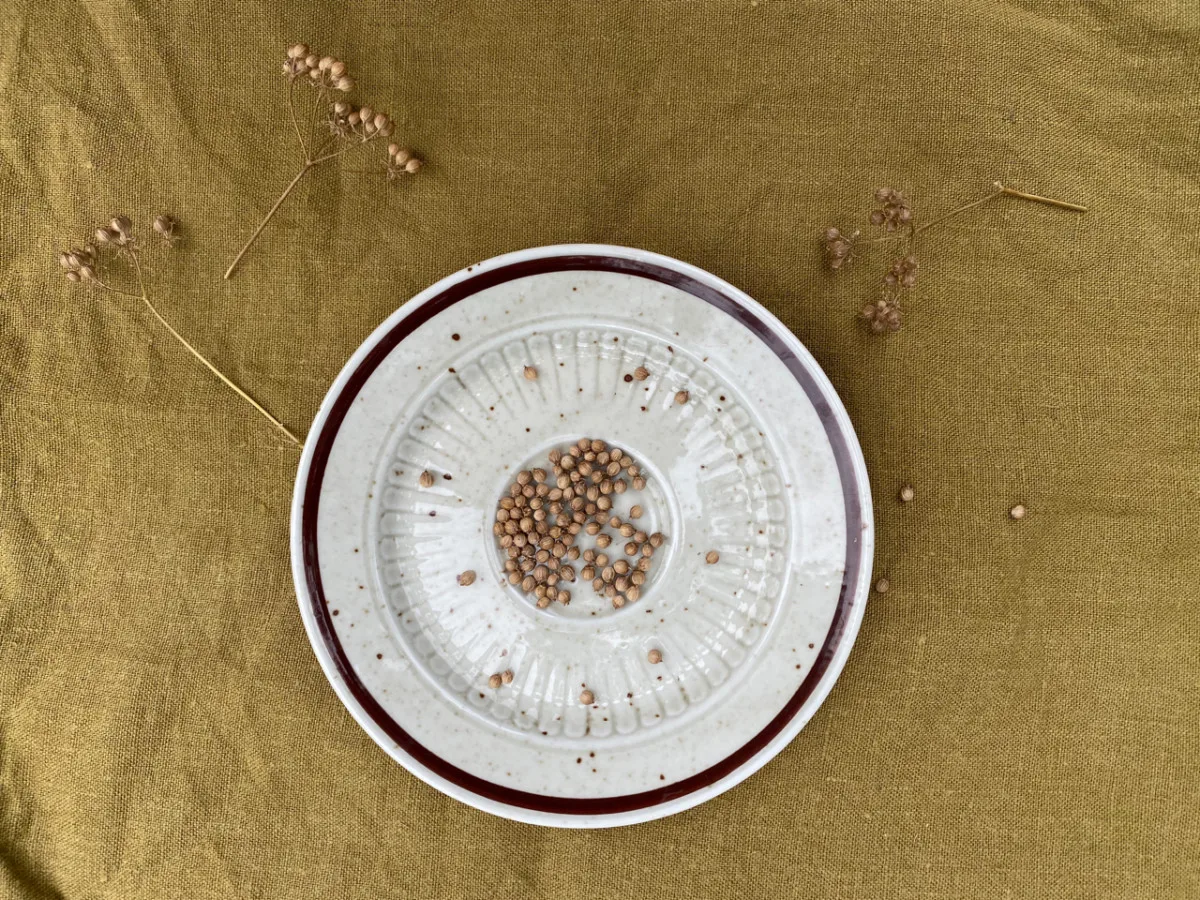
The whole process of harvesting, drying, packaging and shipping them means that, by the time they make their way to your shopping cart, the seeds may be one year old or even older. That’s still fine in terms of storing them, but there’s a significant decrease in quality in old seeds. They won’t add much flavor to your dishes, as you may have discovered if you’ve ever dared to use the contents of spice jars that you’ve unearthed from the back of your cabinet.
The seeds I grow are organic.
We try our best to encourage organic methods and holistic gardening techniques at Rural Sprout, so I can only hope that our readers don’t spray synthetic pest control “solutions” on the garden that feeds their family. That can’t be guaranteed of imported seeds, even the ones that are meant for human consumption (rather than for seed starting).
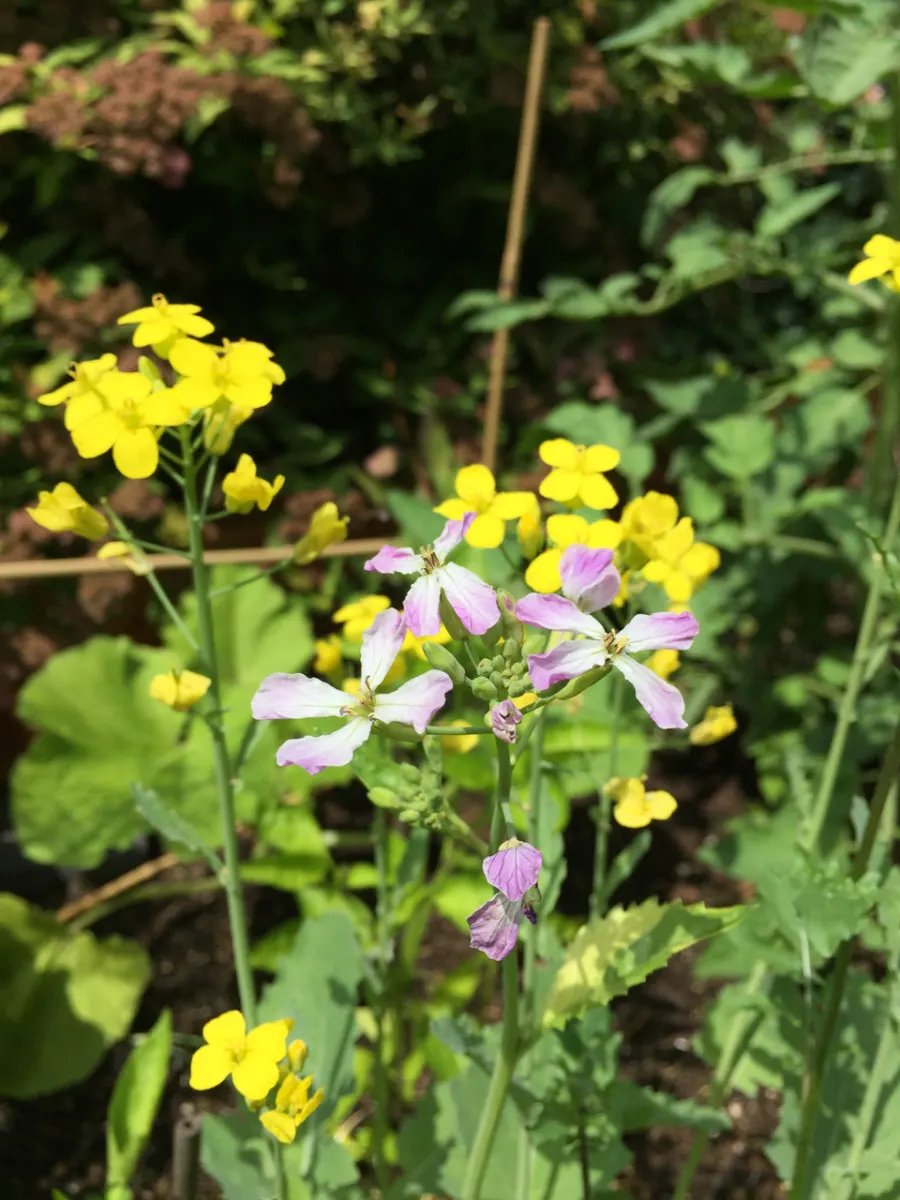
The seeds are a bonus harvest.
For most of the crops on this list, the seeds are not the main harvest. Take fennel, for example, from which you can harvest the leaves and some of the bulbs while letting others go to delicious seed. Similarly, you’d grow celery for the stalk, but you can also eat the seeds. And grow mustard for the leafy greens, but the seeds come as a bonus.
Before I get into the specifics of growing your own, let me clarify what I mean by edible seeds. I know that, technically, we should consider legumes (such as beans, peas, peanuts and lentils) and grains (such as quinoa and amaranth) edible seeds. But in this article, I’ll just tackle seeds that are usually used to spice and flavor the food, not as a dish in and of themselves. I’m also aware that some of these seeds are called fruits. So let’s approach this from more of a culinary point of view than a strictly botanical angle.
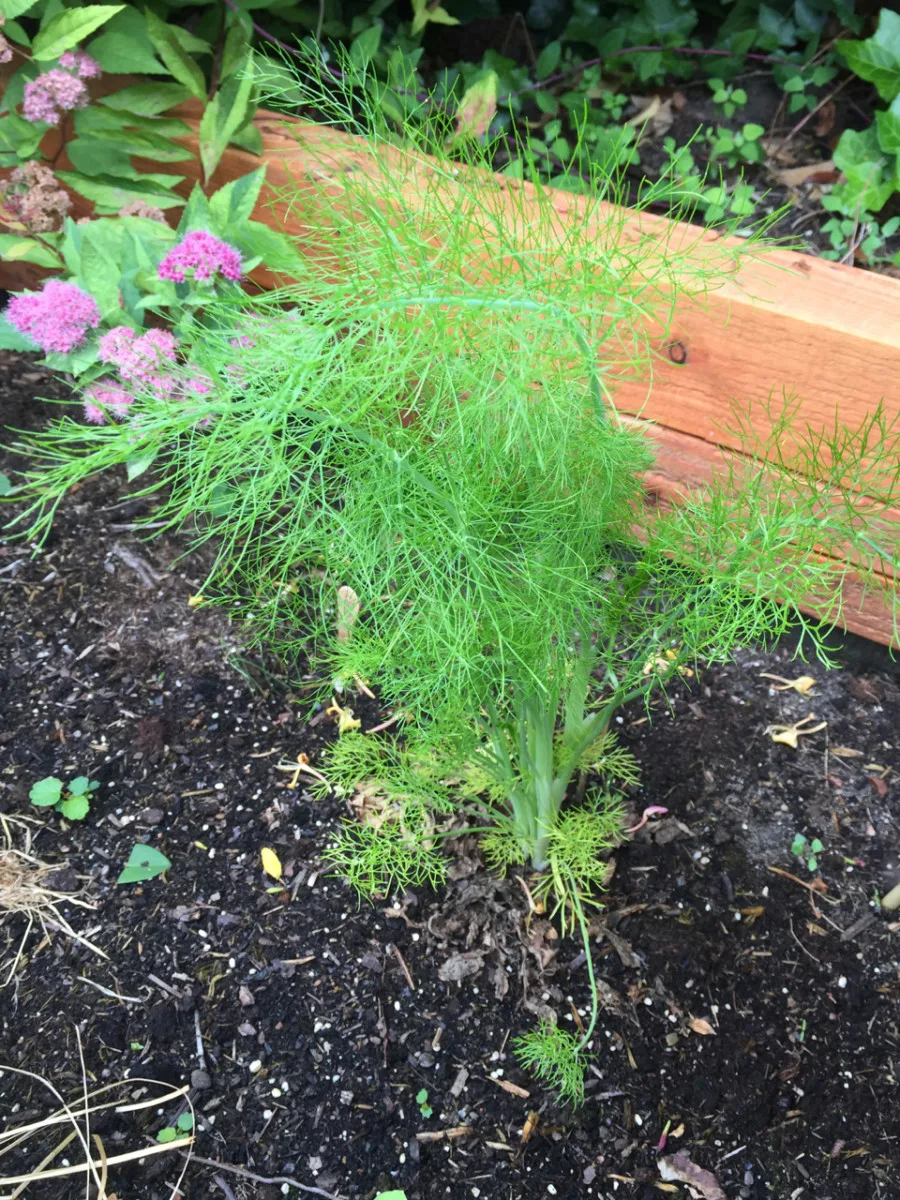
And speaking of culinary delights, I’m adding a few recipe ideas for each of these edible seeds, just to whet your appetite.
How to harvest edible seeds.
Here’s a key detail to keep in mind: before you harvest seeds, you have to let them dry naturally on the seed head. That’s how you get a higher concentration of flavor.
The most straightforward way to harvest the seeds is by just picking them off the seed head once they’ve dried. However, depending on how many plants you have and how good your dexterity is, this method is not the most practical.
An easy way to harvest is using the “paper bag shake” method. Chop off the dry seed heads and place them in a paper bag. Shake the paper bag vigorously to dislodge the seeds, then use a fine sieve to separate the seeds from the pods and the umbels (the umbrella-like structures that hold the seeds). I prefer to cut off my seed pots straight into jars. I allow them to dry in the jar and separate them using a colander whenever I have the time.
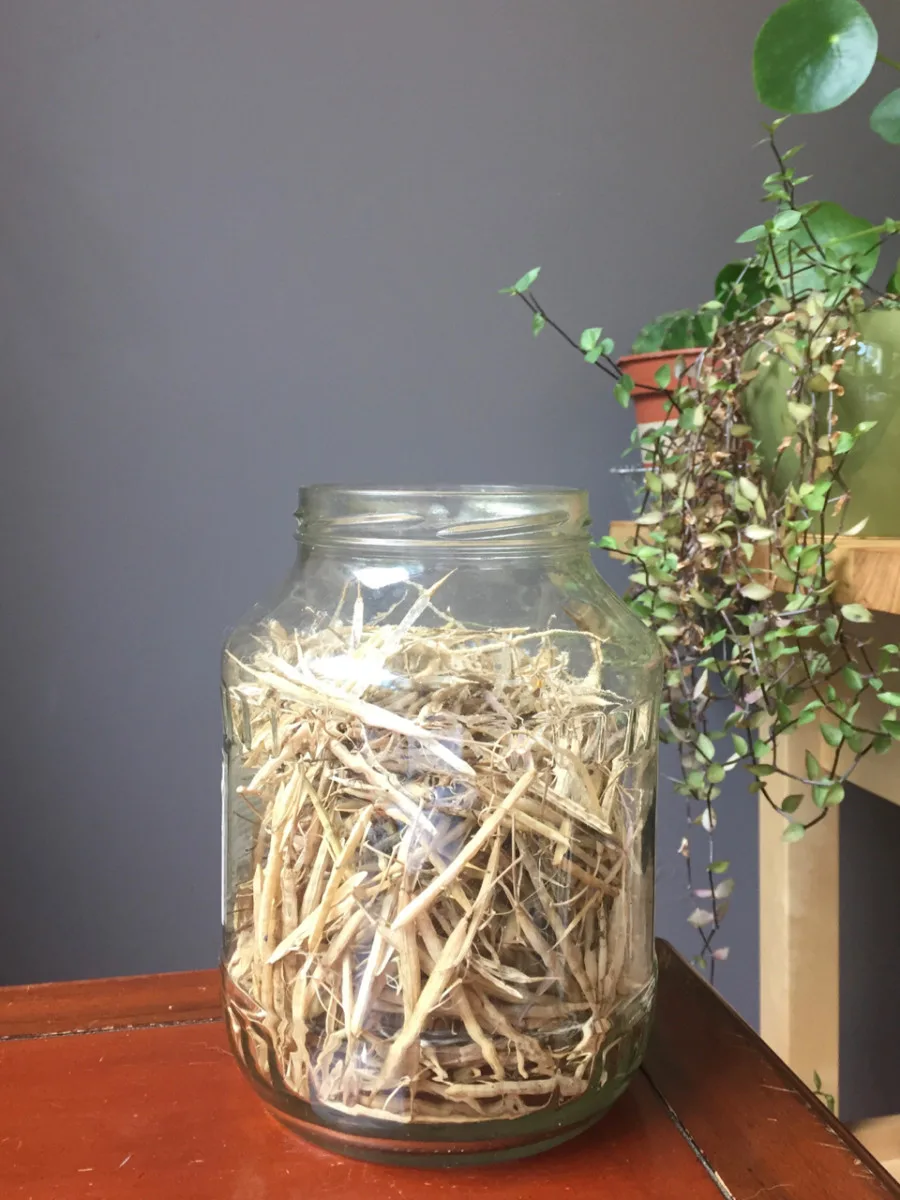
You can store the seeds in sealed jars, preferably in a dark and dry cabinet to keep them tasting fresh for longer.
Here are seven edible seeds that are easy to grow and delicious to eat.
1. Coriander (Coriandrum sativum)
It’s only fair to start with coriander, since it was this seed that inspired the article. But first, I have a confession. I’m a cilantrophobe. I’m one of those people for whom cilantro tastes like soap. And bad soap at that. (Not that I’ve munched on too much soap, mind you!) It turns out that not liking cilantro is genetic and about seventeen percent of people have this gene. Here’s more about the study in Nature.
What does cilantro have to do with coriander? you may wonder, especially if you’re one of our American readers. The fresh leaves are often referred to as cilantro in the United States, while the seeds of the same plant are called coriander seeds.
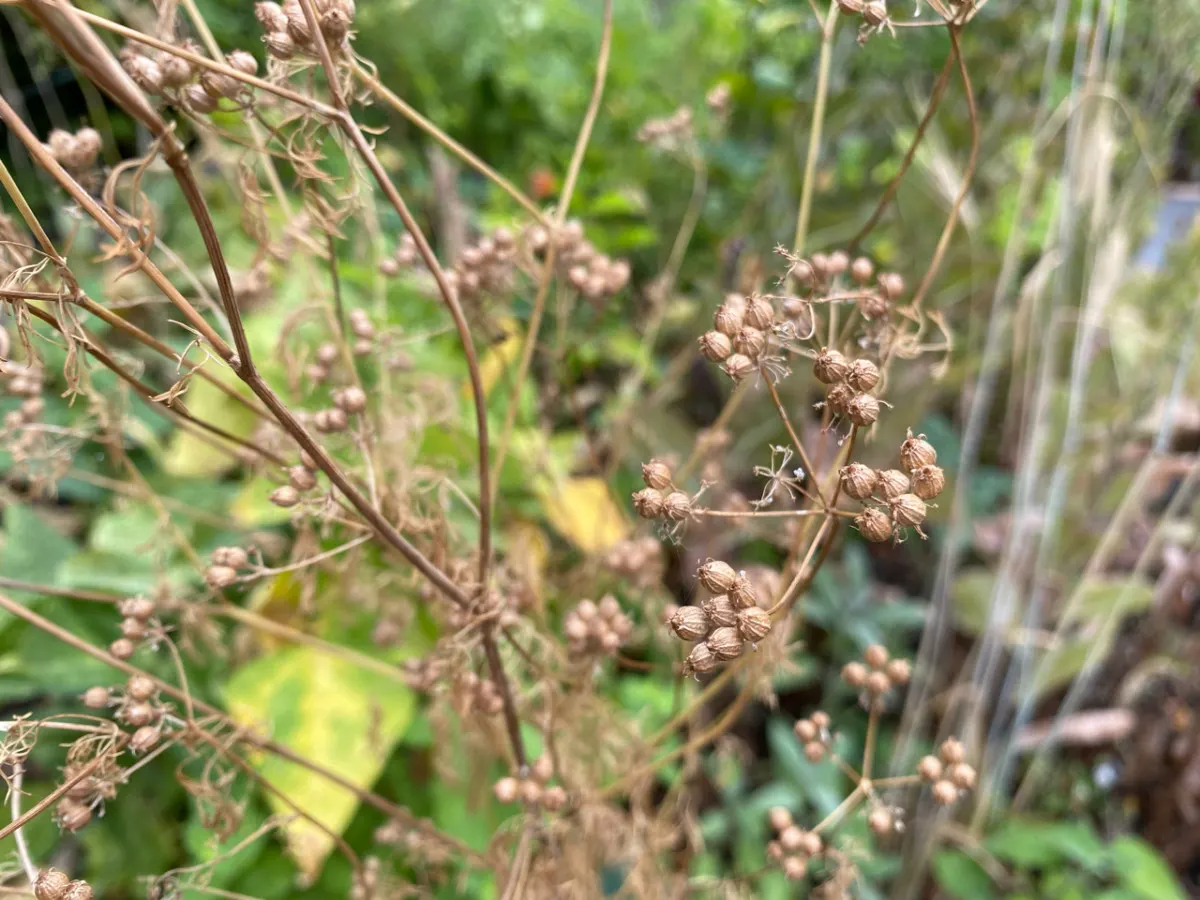
Is it possible to hate cilantro while liking coriander?
Yes, I am one of those people. I use coriander with abandon while I’m a proud card-carrying member of the IHateCilatro club. So even if you don’t like the soapiness of cilantro, give the seeds a try.
I grow a couple of coriander plants every year, starting them from seed in pots about a month before the last frost. And since I’m just interested in the seeds, not the foliage, I plant it early enough in spring and allow it to bolt when it gets hot in the summer. If you like the taste of the leaves, you can also succession seed coriander every three weeks throughout spring.
Two ways to eat coriander seeds:
Potato salad with fennel and radishes from Bon Appetit: This recipe uses one tablespoon of coriander seeds. Yup, one whole tablespoon and you’ll still be craving more.
Coriander seed bundt cake from Food52
2. Fennel (Foeniculum vulgare)
There are two types of fennel popular with gardeners:
- the tall perennial herb with thin bulbs (Foeniculum vulgare)
- the Florence fennel (Foeniculum vulgare var. azoricum) – a cultivar with an inflated bulb that’s best harvested young.
You can use both varieties for seed harvests, although a more productive practice is to keep the Florence fennel as an annual bulb.
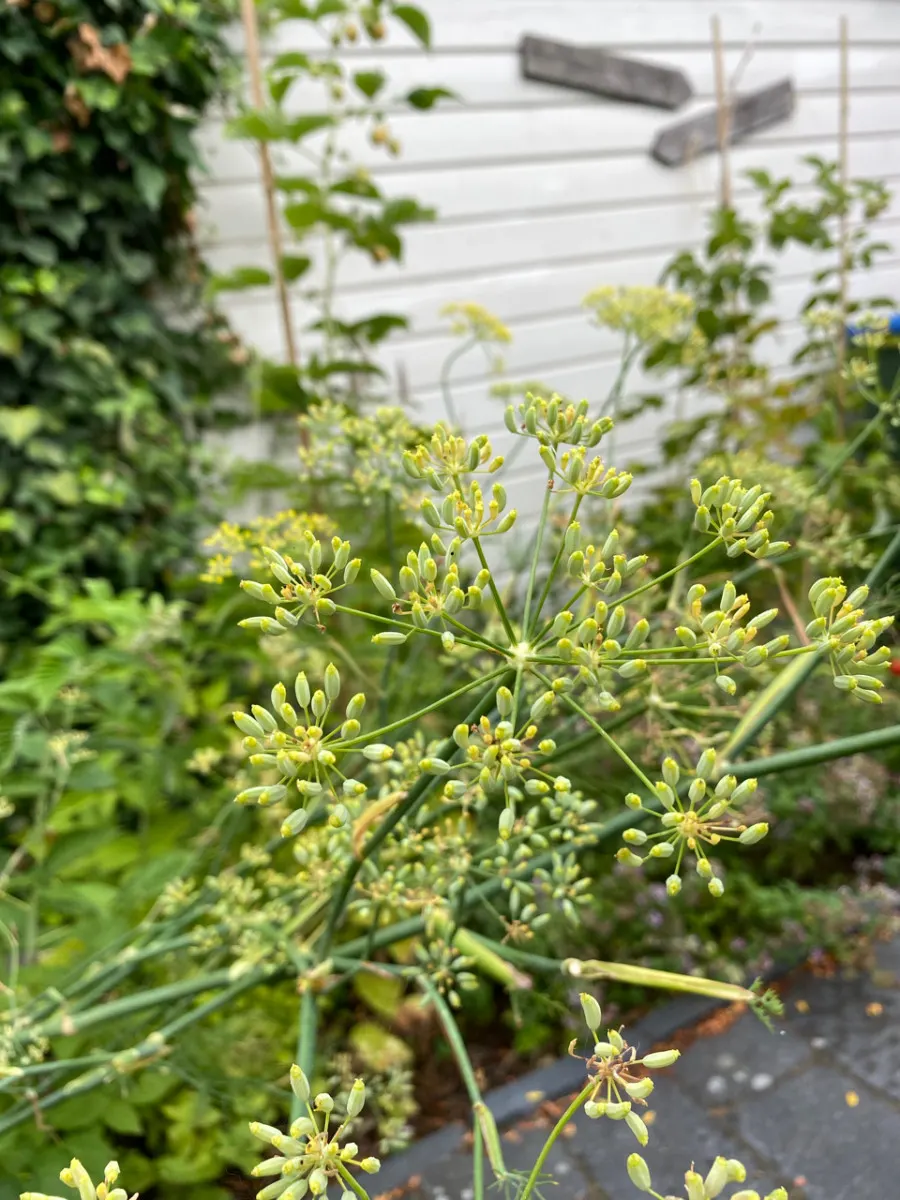
Fennel is hardy in USDA zones 4-9, but it can also be grown as an annual in cooler climates. Fennel seeds taste very similar to anise and star anise seeds due to anethole, an aromatic compound that they all have in common.
You can plant fennel from seed straight in the ground in full sun after the last spring frost. Once established, the common fennel can tolerate drought, but it might react by bolting. Obviously, that’s not a problem when it’s the seeds you’re after. You can harvest fennel seeds as early as mid-August.
Two ways to use fennel seeds:
Gluten-free crackers with fennel seeds from Moon and Spoon and Yum
Fennel-spiced potato wedges from Vegetarian Times
3. Dill (Anethum graveolens)
Not to get poetic here, but let me confess that dill is to me what madeleines were to Proust. Whenever I taste dill, I am transported back to my childhood and the taste (and smell) of my grandmother’s homemade dill pickles. She used both dill stalks and seeds to flavor everything she pickled, from cornichon and cauliflower to bell peppers and carrots.
As a native of the Mediterranean, dill likes both sun and warmth. So you should plant it in a location that gets at least six hours of sunlight. Seedlings are hard to transplant and can’t handle root disruption very well, so it’s best if you sow dill directly into the ground after the last spring frost date has passed. You can keep planting it every three weeks up until midsummer. Your first dill seeds will be ready to pick from late August to early September.
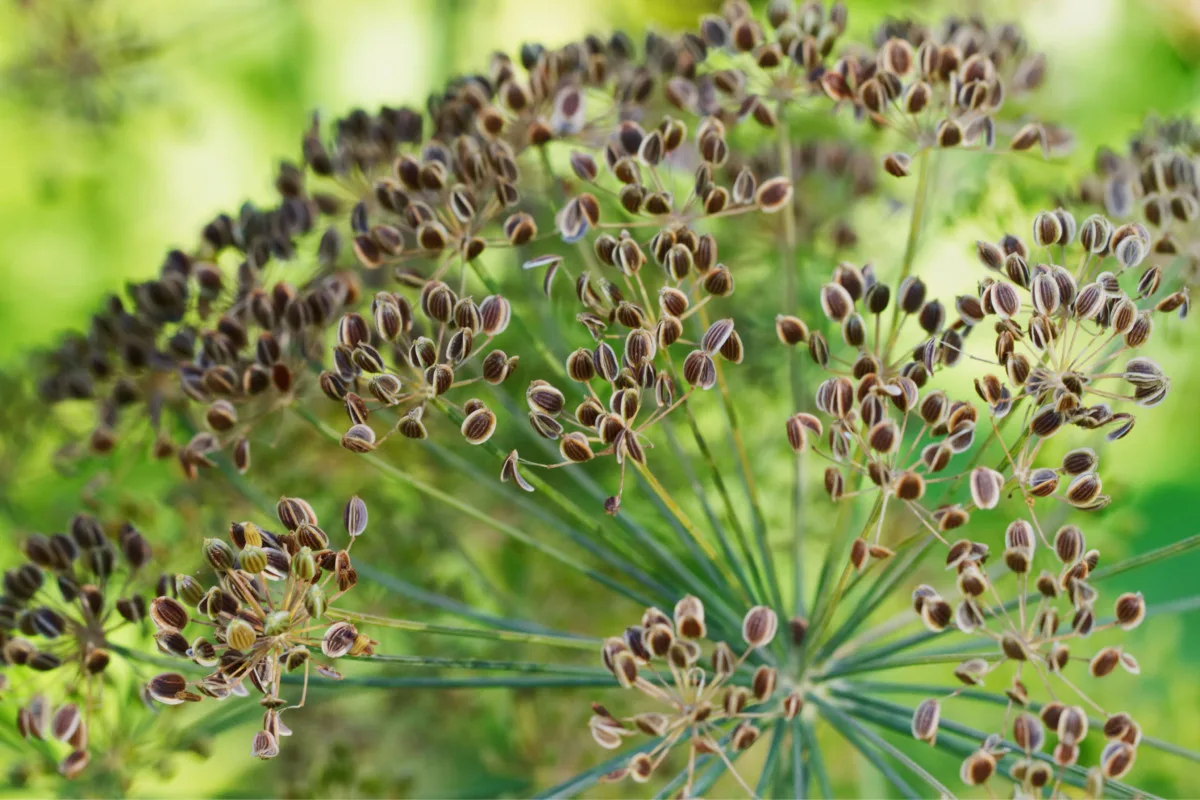
Of course, using dill seeds to flavor pickles is a classic, but you can also use it in bread or as a bagel topping.
Here are two recipes that use dill in abundance:
Dill pickles from The Kitchn
Herb bread with dill seeds from Meemaw Eats
4. Celery (Apium graveolens)
If you think the perfection that is mac and cheese cannot possibly be improved upon, you’ve probably never tried adding celery seed to it. Just give it a go and you can thank me later! You can also use celery seeds in any dishes that you want to enhance with the taste of celery without adding the bulk of celery stalks, such as stews, soups and oven roasts.
Celery seed is usually harvested from wild celery. That doesn’t mean that it only grows in the wild; of course, you can plant it in your garden. But we use the name “wild celery” to distinguish it from the juicy stalks that we find in most supermarkets. The stalks of the wild celery are thinner and more fibrous and they taste better cooked than raw.
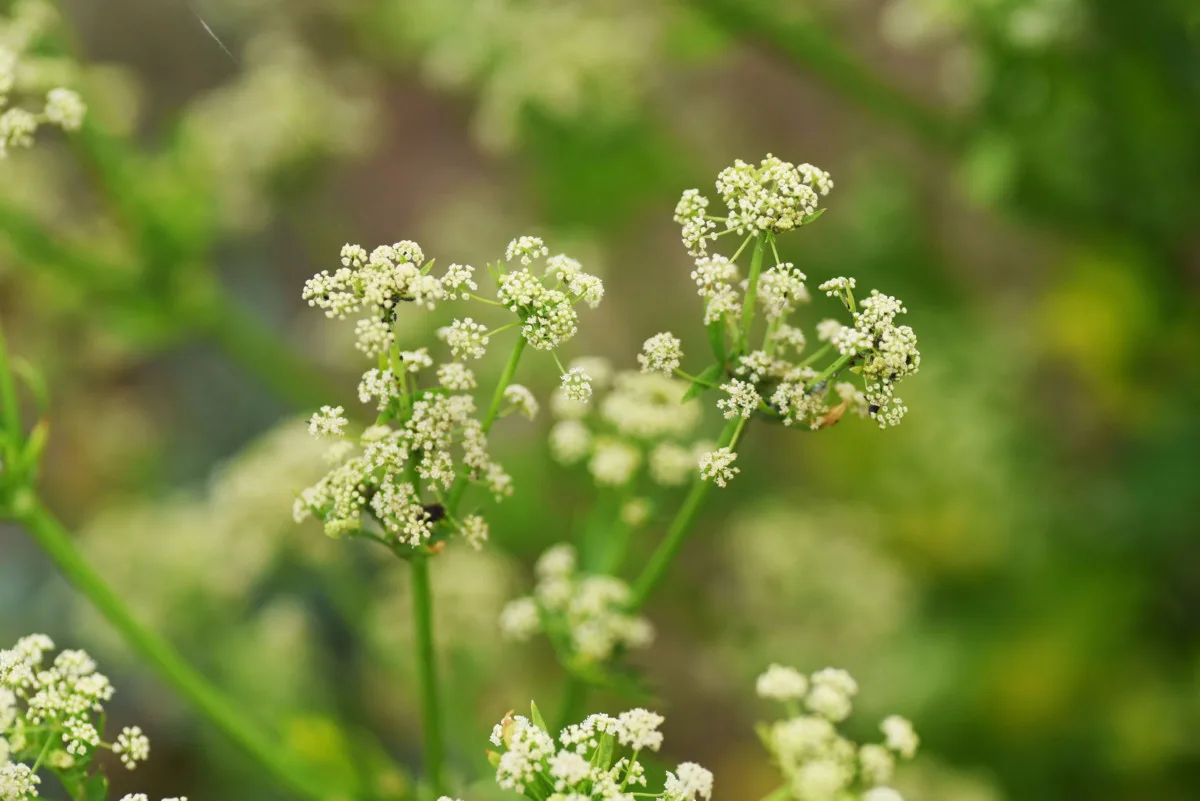
Celery has the reputation of being a “gardener’s challenge” because it requires consistency in temperature, moisture levels and sun exposure. Plant the seeds directly in the ground once the soil has warmed up above 50F (10C) in late spring. Choose a place that gets full sun without drying out too quickly.
Celery is a biennial plant, which means that it will start producing flowers and seeds only in its second year of growth. You can harvest the stems and the leaves during the plant’s first summer and fall, but try to leave the heart intact if you want to harvest seeds during its second year.
Two ways to use celery seed:
Celery seed dressing recipe from Cleverly Simple
Four-cheese mac and cheese with celery seed from Delish
5. Mustard (Brassica nigra)
Mustard, a member of the Brassica family, is a cold-season crop that you can sow in succession every four weeks. You can start it outdoors about five weeks before your last expected frost date in spring. I think it’s an instant gratification crop, since it only takes around 40 days to reach a reasonable harvest size.
Black mustard has been used as a spice in Europe and Asia for thousands of years and has been documented in agricultural treaties as early as the 1st century A.D. It’s the seed that was originally used to make mustard paste, although it has been gradually replaced with brown mustard seed which is easier to harvest mechanically.
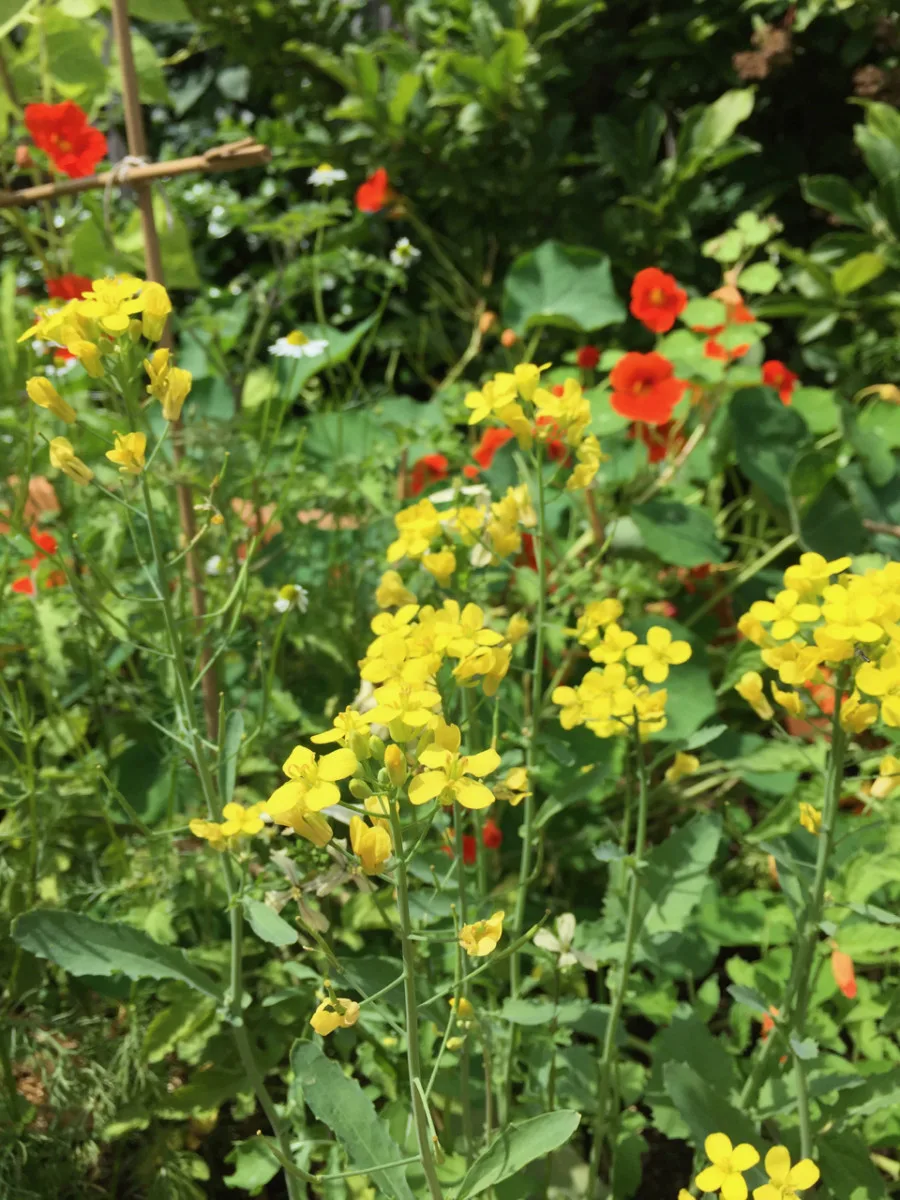
You don’t have to start making your own mustard condiment to enjoy the seeds though. You can use them in curries, stews, stir fry and salad dressing.
As for the mustard plant itself, it’s easy to grow (perhaps too easy, since it has been declared invasive in some states).
You can keep it under control by harvesting young leaves (for salads), older leaves (you can wilt them in a pan with garlic and olive oil) and the seed pods before they get a chance to spread. You’ll find a lot of recipes for mustard greens, so here’s where to get started with mustard seeds:
Yellow split pea soup with coconut, turmeric and black mustard seeds from BBC Food
Brussels sprouts with chestnuts, pancetta, mustard seeds and olive oil from Great British Chefs
6. Caraway (Carum carvi)
I admit to first having planted caraway on a whim. Let’s call it curiosity, shall we? I chucked some caraway seeds that I had bought from my local Turkish store into the ground to see what would happen. The experiment was successful and I’ve been growing caraway from my own saved seeds ever since.
You can start caraway in pots and transfer it outdoors after the last spring frost. But if you’re in a warmer climate, you can start it outdoors in the fall. If you’re planning on harvesting the seeds, it’s better if you grow it in full sun. Keep the plant well-watered until it gets established. In warm climates, you can treat it as a perennial and prune it down in spring. However, it’s mostly treated as an annual or a biennial in temperate climates.
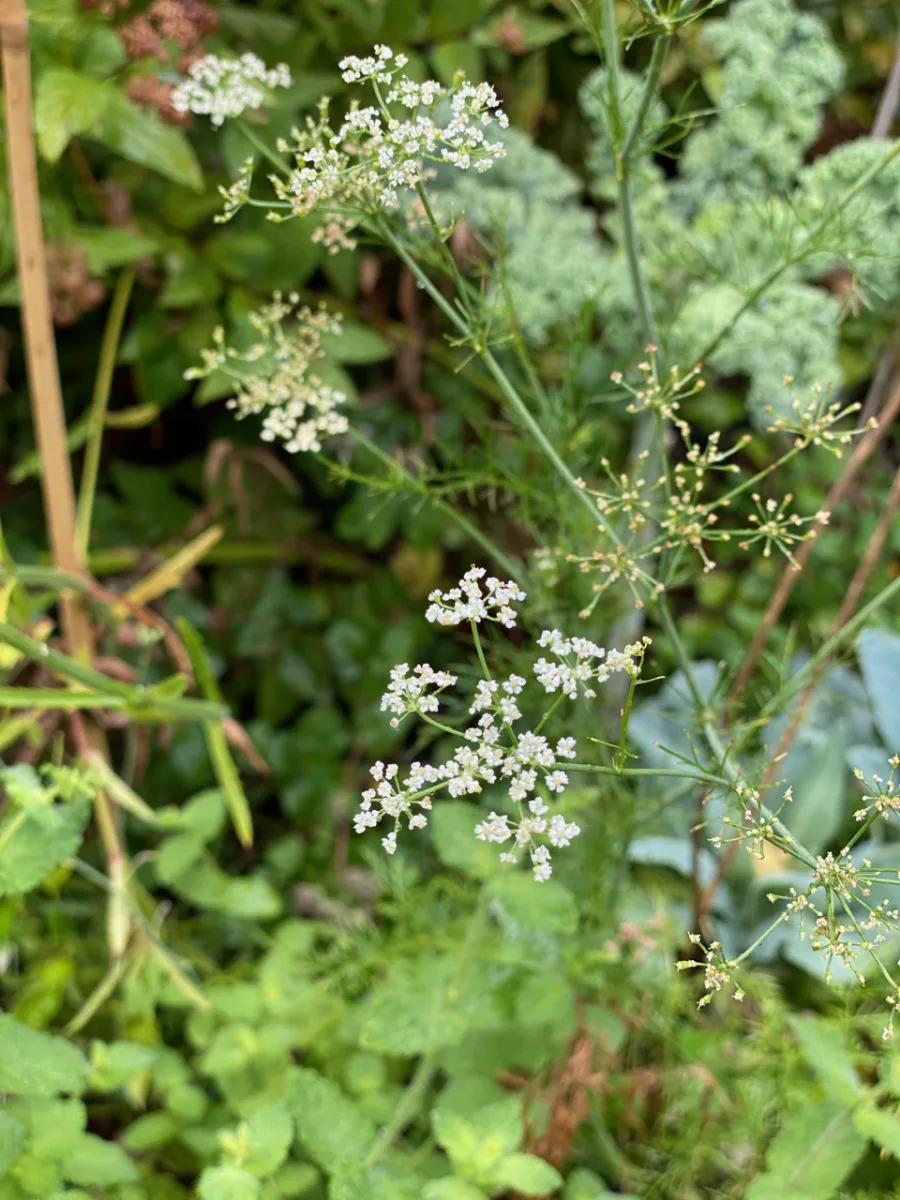
Parasitic wasps find it irresistible, and you definitely want parasitic wasps in your garden if you have an aphid infestation. It’s a great companion plant to brassicas and plants with shallow roots, but it’s best kept apart from herbs such as fennel and dill due to the risk of cross-pollination.
You can use caraway seeds in:
Rye bread with caraway seeds from Taste of Home
Irish caraway seed cake from Food.com
7. Radish pods
I admit, I’m expanding my criteria here to include seed pods, just because not a lot of gardeners realize that radish pods are edible, both as a fresh snack and as an ingredient in dishes such as stir fry, risotto and curry.
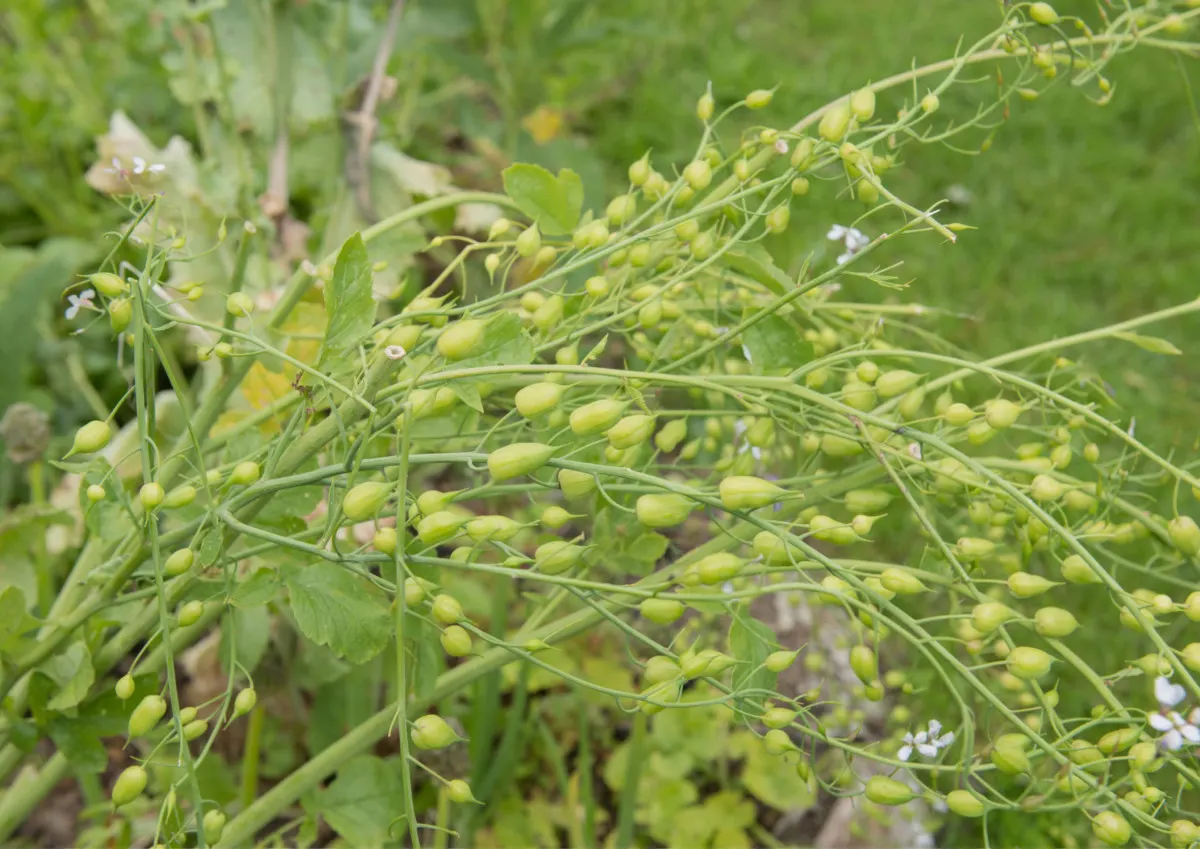
Elizabeth wrote an entire article on how to grow, harvest and cook radish pods, so I won’t elaborate on that. Suffice it to say you can use them in almost every recipe that calls for radishes.
Here’s how to make a simple citrusy side dish with radish pods from Being Nutritious.
Just as a final disclaimer, please note that some of these seeds, such as celery, may cause an allergic reaction. If you know you have food allergies, consult a medical professional before you consume any of these seeds.

Get the famous Rural Sprout newsletter delivered to your inbox.
Including Sunday ramblings from our editor, Tracey, as well as “What’s Up Wednesday” our roundup of what’s in season and new article updates and alerts.


